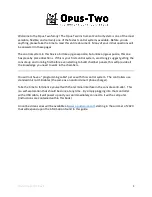
User Manual
Airbridge cBTS3612 CDMA Base Station
System Description
2 Hardware Architecture
2-58
Systematic protection: Since information equipments are extensively connected and
lightning surge is everywhere, protection only on equipment and board level is not
enough. A systematic protection should be considered, including the equipment
office (site) where the BTS is located.
Probability protection: Lightning is random and lightning protection devices cannot
suppress all over-voltage and over-current . Although there is small probability of
destructive lightning, the cost of protection is considerable.
Multi-level protection: IEC 61312 divides the equipment premises area into several
lightning protection zones: LPZ0A, LPZ0B, LPZ1 and LPZ2, as shown in Figure
2-26.
LPZ2 EM field
further attenuation
LPZ0A
is likely to be attacked by
direct lightning, with no attenuation
in the electromagnetic field
Antenna
Metal (pipe)
Equipment
Communication cable
Power cable
Hole (such as window)
Pole or fence
LPZ0B is not likely to be
attacked by direct lightning,with
no attenuation in the
electromagnetic field
LPZ1 is not likely to be attacked by
direct lightning, with no attenuation in
the electromagnetic field.
Figure 2-27
IEC 61312 division of lightning protection zone
BTS equipment is usually in LPZ1, and communication cables, power cables and
antennae are usually in LPZ0A. Different protection measures are taken for different
zones. The multi-level protection requires equipotential connection (equipotential
connection means the connection of lightning apparatus, metal devices, foreign
conductor, electrical appliances and telecommunication equipment located in the
area with conductors or surge protectors) to minimize potential difference between
metal parts and the systems.
Generally, to lower the probability of lightning attack to the BTS, the following three
aspects should be considered: protection system of the room (site) where BTS is
located, BTS internal lightning protection system, and their interoperation.
















































